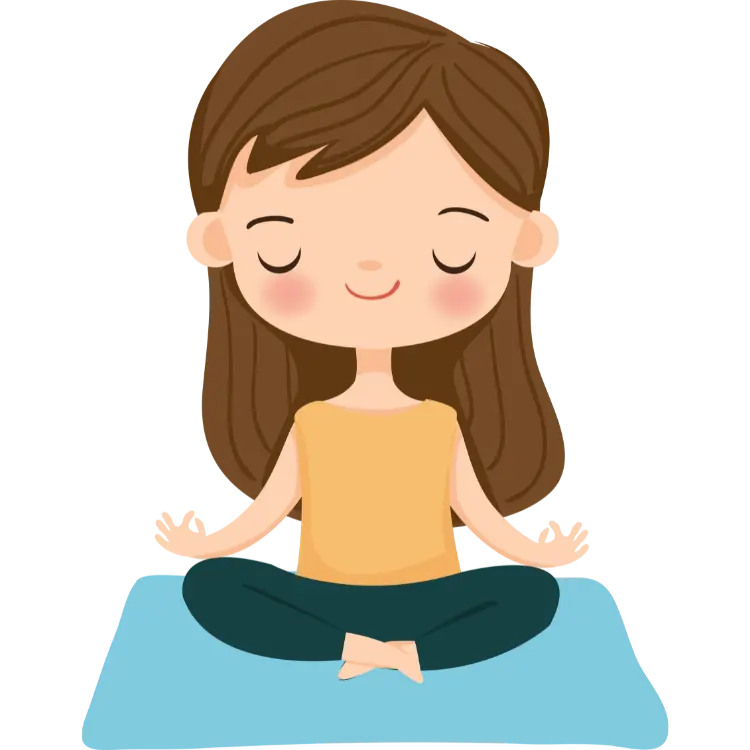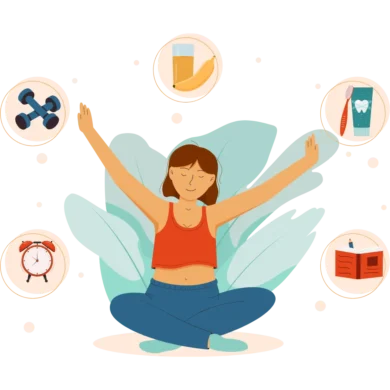The Importance of a Morning Routine Checklist
Your morning sets the tone for the entire day. Whether you’re aware of it or not, the way you spend your first few hours determines your productivity, mood, and overall success for the day ahead.
A purposeful morning routine helps you start the day with clarity, focus, and energy. Instead of diving straight into the chaos of emails, notifications, or immediate work demands, you should intentionally prepare yourself mentally and physically.
Routine builds momentum, and consistency is key to sustainable productivity. By cultivating daily habits that support your well-being and goals, you not only boost your performance but also protect your mental health. It’s about setting yourself up to win the day before it even begins. Whether it’s spending time in quiet reflection, moving your body, or simply planning out your top tasks, a solid morning routine is an investment in your long-term success and happiness.
Unique Challenges for Entrepreneurs, Freelancers, and Self-Employed
When you’re self-employed, the freedom to design your own schedule is both a blessing and a challenge. Unlike those in traditional jobs who operate within predefined structures, entrepreneurs, freelancers, and self-employed individuals are responsible for creating their own routines from scratch. Without the external framework of office hours, managers, or coworkers to keep you on track, maintaining discipline can be challenging.
You don’t have the pressure of a boss waiting for you to clock in, and there’s no set boundary between your personal and work life. This can lead to procrastination or, conversely, overworking. Without a routine, you can find yourself struggling to balance productivity with self-care, which can quickly lead to burnout.
Another challenge is the unpredictability of your workload. Each day can look different. Client demands, deadlines, and unexpected opportunities can throw off your plans, making it harder to stick to a consistent schedule. This level of uncertainty requires a morning routine that is adaptable yet solid enough to provide a grounding effect. You need to craft a routine that not only fits your unique lifestyle but also helps you stay motivated, focused, and resilient in the face of inevitable challenges.
Key Components of an Effective Morning Routine Checklist

Creating an effective morning routine starts with waking up at a consistent time but with a key caveat: consistency doesn’t have to mean rigidity. For self-employed individuals, the time you wake up should work with your life and schedule, not against it. The goal is to find a time that provides stability without being so fixed that it limits your flexibility. Perhaps it’s not always exactly the same time every morning, but a general window that works for you. The point is to create a rhythm that trains your body and mind to expect productivity to follow.

Once you’re up, consider adding a moment of mindfulness or meditation to your morning. This practice doesn’t have to be lengthy or rigidly scheduled—it could be a few minutes of deep breathing, journaling, or enjoying a quiet cup of coffee. The aim is to center your mind and create a buffer between waking and diving into the day’s demands. This moment of calm can help you start with clarity, allowing you to adjust to any unpredictability that might come later. Flexibility here means giving yourself the space to be still, even if your schedule varies.

Incorporating exercise or movement is another crucial aspect of a productive morning, but here again, flexibility is your friend. Whether it’s a short yoga session, a walk, or a full workout, the key is to get your body moving in a way that energizes you without feeling like a chore. Some mornings may call for a quick stretch between tasks, while others might allow for a longer, more involved routine. What matters most is that you’re tuning into your body’s needs and making movement a priority in a way that fits your day.

Fueling your body with a healthy breakfast is just as important. But rather than focusing on a set menu, think about what nourishes you on any given day. Some days, you may have time to prepare a full meal; on others, a smoothie or a quick bite might be more realistic. The key is to make sure that whatever you eat, it sustains your energy and keeps you sharp, setting a positive tone for the hours ahead.

Next, take a moment to review your daily goals. What do you want to achieve today? This step is critical because it helps you prioritize, but it should be flexible enough to accommodate shifts in your day. You might find that your goals need to adjust based on new client demands or unexpected opportunities. Instead of locking yourself into an unchangeable to-do list, allow room for movement. A simple mental review or a quick brainstorm of your top three priorities helps keep you focused without creating unnecessary pressure.

Incorporating personal growth into your morning routine, even for just a few minutes, can set a powerful tone for the entire day. Whether it’s reading, listening to a podcast, or learning something new, dedicating time to your development fuels you with motivational energy that carries through your work. It doesn’t need to be the same every day—squeezing in a few pages of a book or catching a podcast while having breakfast is enough. The key is to make consistent investments in yourself, creating a ripple effect that boosts your mindset and keeps you inspired throughout the day.

Finally, be intentional about planning breaks and time blocks for your day. Scheduling work time and rest periods helps prevent burnout, but this, too, should remain fluid. Some days, you may need to take shorter breaks; other days, you may have more space for relaxation. The important part is recognizing when you need to pause and recharge. By blocking out time for rest, you ensure that you’re not overextending yourself, even in the busiest of times.
Overcoming Common Challenges
One of the hardest parts of sticking to a morning routine is consistency. It’s easy to fall off track, especially when working for yourself. Try techniques like habit stacking—where you pair a new habit with an existing one—or using time-planning apps like PlanArty to remind you of your routine.
Motivation and self-discipline can also be hurdles. There will be days when you don’t feel like following your routine, but that’s where discipline comes in. Motivation gets you started, but discipline keeps you going. Find what inspires you—a vision board, a quote, or a reward system—and use it to push through the tough days.
To avoid overwhelm, keep your routine simple and achievable. It’s better to do a few key activities well than to try to cram in too much and end up skipping everything. Simplicity leads to sustainability.
Related article
Daily Checklist for Improved Efficiency
Using a daily checklist helps you stay organized and boost productivity by keeping tasks clearly outlined and prioritized. With tools like PlanArty, you can track and adjust your to-do list throughout the day, ensuring flexibility while staying on top of your responsibilities.
Morning Routines of Successful Entrepreneurs

Elon Musk (CEO of Tesla and SpaceX): Elon Musk is known for his laser-focused approach to work, and his morning routine reflects this. He wakes up around 7 a.m. and immediately starts his day by tackling the most critical tasks. Musk skips breakfast altogether and dives straight into work, prioritizing efficiency and productivity over a leisurely morning. His routine is centered around getting a head start on the day by addressing his top responsibilities before anything else.

Arianna Huffington (Founder of The Huffington Post and Thrive Global): Arianna Huffington’s morning routine emphasizes rest, gratitude, and self-care. She begins each morning with a few minutes of breathing exercises and meditation to ground herself. Huffington also practices gratitude as part of her routine, which she believes helps her maintain a positive mindset throughout the day. For her, a well-rested, calm, and centered morning is the foundation for sustained productivity and success.

Oprah Winfrey (Media Mogul and Philanthropist): Oprah Winfrey begins her mornings with a focus on mindfulness and wellness. She starts with 20 minutes of meditation, a practice she believes is essential for mental clarity and balance. Afterward, she dedicates time to physical exercise, which varies from a walk to more intense cardio. This combination of mindfulness and movement helps her enter the day with calm and focus, setting a positive tone for the challenges ahead.

Jack Dorsey (Co-founder of Twitter and Square): Jack Dorsey is a strong proponent of early rising and disciplined morning routines. He wakes up at 5 a.m. and immediately begins his day with an hour of meditation. Following this, Dorsey embarks on a six-mile run, which he considers essential for maintaining his physical and mental stamina. By dedicating the early hours to his well-being, he sets himself up for a productive and energized day.

Tim Ferriss (Author, Podcaster, and Entrepreneur): Tim Ferriss, author of The 4-Hour Workweek, focuses on mental clarity and intention in the mornings. He begins with journaling, where he reflects on his thoughts and goals for the day. Ferriss also includes mindfulness practices such as meditation or breathing exercises. This time for introspection helps him clear his mind, set daily priorities, and cultivate a mindset of productivity and calm.





